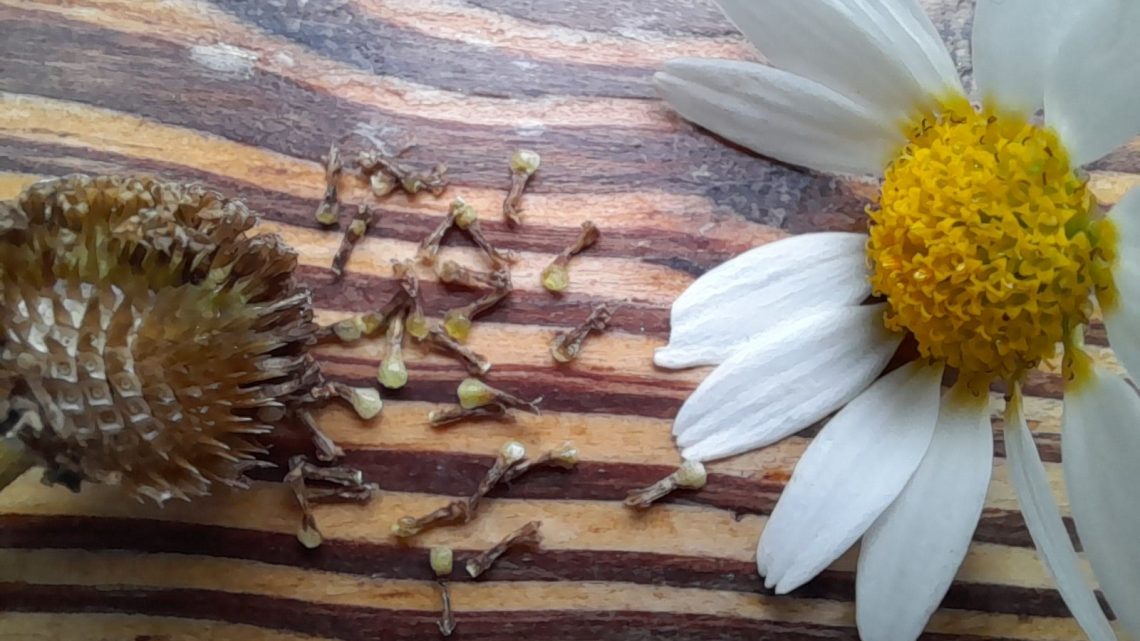
Description –
Tripleurospermum inodorum, common names scentless false mayweed, scentless mayweed, scentless chamomile, wild chamomile, mayweed, false chamomile, and Baldr’s brow, is the type species of Tripleurospermum. This plant is native to Eurasia where it is commonly found in fields, fallow land and gardens.
- Height: 20–80 cm (8–32 in.). Usually 1-stemmed. Stem erect–ascending, branching, glabrous, green.
- Flower: Single flower-like, usually 3–5 cm (1.2–2 in.) capitula, surrounded by involucral bracts. Capitula’s ray-florets white, tongue-like, tip shallowly 3-toothed; disc florets yellow, tubular, small. Stamens 5. Pistil of 2 fused carpels. Involucral bracts different lengths, 1–1.5 mm (0.04–0.06 in.) broad, light brown–white margins. Disc stacked, full. Capitula 1–20 borne in a corymbose cluster.
- Cotyledons:oribicular to oblong, very small,3 to 5 mm long, Stalkless
- Leaves and stems: Alternate, short-stalked–stalkless. Blade 2–3 times pinnately lobed (–with leaflets), glabrous, lobes (or leaflets) long, thread-like narrow, sharp-pointed. Leaves are ¾ to 3 inches long, feathery with a few to numerous thread-like branching lobes. Stems are single, erect, branched in the upper plant, weakly ridged or lined, hairless though sparsely hairy when young.
- Fruit: Flattish, ridged achene, with 2 round–angular oil spots, tip sometimes with small, membranous ring.
- Habitat: Fields, fallow land, lawns, wasteland, roadsides, yards, gardens.
- Flowering time: June–October.
- Life cycle: annual, short-lived perennial.
Pollen is collected by solitary bees.
Disgrifiad –
Planhigyn blodeuol o deulu llygad y dydd a blodyn haul ydy Amranwen ddi-sawr sy’n enw benywaidd. Mae’n perthyn i’r teulu Asteraceae. Yr enw gwyddonol (Lladin) yw Tripleurospermum inodorum a’r enw Saesneg yw Scentless mayweed. Ceir enwau Cymraeg eraill ar y planhigyn hwn gan gynnwys Ffenigl y Cŵn, Amranwen, Ffenigl Cochion, Ffenigl Rhuddion.
Daw’r gair “Asteraceae”, sef yr enw ar y teulu hwn, o’r gair ‘Aster’, y genws mwyaf lluosog o’r teulu – ac sy’n tarddu o’r gair Groeg ἀστήρ, sef ‘seren’.